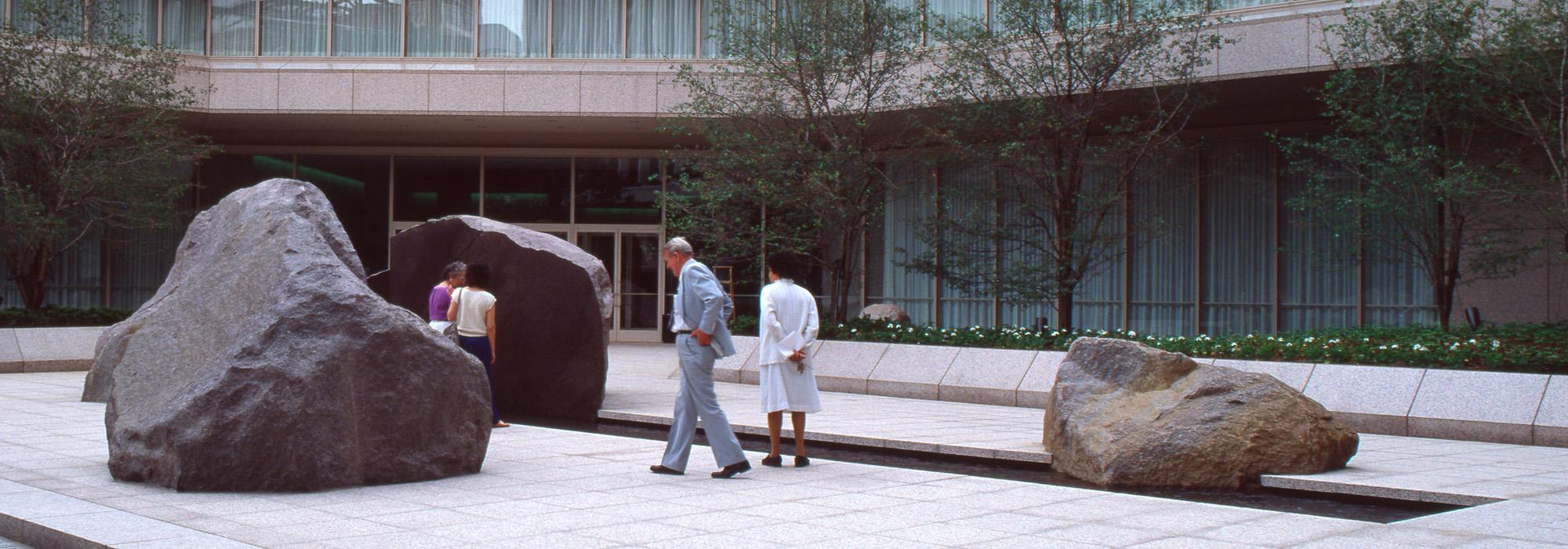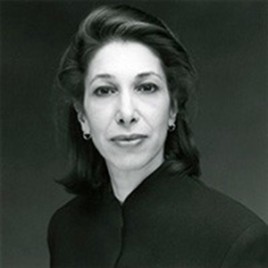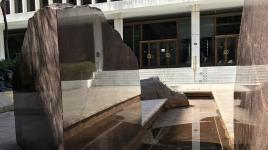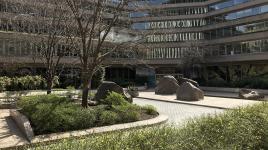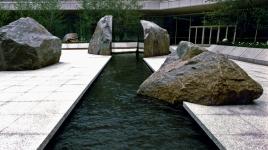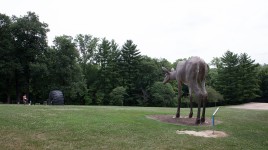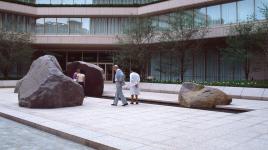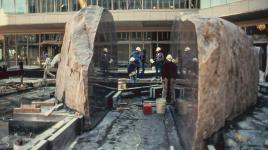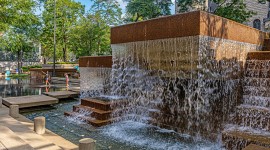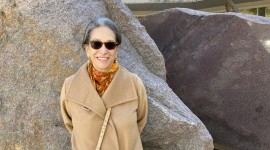Pioneer Information
Born in Philadelphia, Pennsylvania, Zimmerman earned a B.A. in psychology from the University of California, Los Angeles (UCLA), in 1968, followed by an M.F.A in 1972. After graduation, she experimented with installation design, establishing foundational principles in form, space, and natural elements. After receiving an Artist Fellowship Award from the National Endowment of the Arts in 1976, she traveled to India to study sacred and historic sites. The experience inspired Zimmerman to create meaningful public spaces using the combined disciplines of sculpture, architecture, and landscape architecture. Drawing inspiration from prehistoric, archaeological, and geological sites, her early works included the temporary sculptural projects Monarch’s Trough in Lewiston, New York, in 1978; Sightlines I, featured at the 1981 Olympics in Lake Placid, New York; and the installation Black Pool II at the Chicago Museum of Art in 1979.
Zimmerman’s first large-scale work, MARABAR, was completed in 1984 for the National Geographic headquarters in Washington, D.C. The sculptural project garnered international acclaim and led to a number of commissions, including the public projects Terrain, placed at O’Hare International Center in 1987, and Assembly of Friends at the U.S. Embassy in Tanzania in 2004. More recent work includes the permanent project Mississippi Meander, created for the Sydney and Walda Besthoff Sculpture Garden at the New Orleans Museum of Art in 2019.
Zimmerman has served as visiting professor at the Harvard Graduate School of Design, the University of Pennsylvania, and the University of Virginia, and she was a member of the U.S. Commission of Fine Arts from 2003 to 2008. Her work has earned numerous awards, including three Artist Fellowship Awards from the National Endowment of the Arts, the Noguchi Award, alongside Tadao Ando, and the Roy Lichtenstein Residency at the American Academy in Rome.



